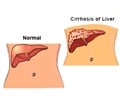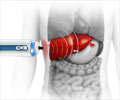Analysis of San Diego County children aged two to 19 who died from traumatic accidents, homicide or suicide and had a medical examiner autopsy between 1993 and 2003.
Until now little was known about the prevalence of non-alcoholic fatty liver disease (NAFLD) in children. To gauge its occurrence a University of California, San Diego (UCSD) School of Medicine-led team studied 742 autopsy reports and tissue analysis of San Diego County children aged two to 19 who died from traumatic accidents, homicide or suicide and had a medical examiner autopsy between 1993 and 2003.
The study, published in the October issue of Pediatrics, found that fatty liver was present in 13% of the children and adolescents whose records were studied. Utilizing rigorous standardization methods that narrowed the study population to represent children in the community, and adjusted for age, gender, race and ethnicity, the team estimated that NAFLD is present in 9.6% of the children and adolescents living in San Diego County. The team determined it was the most common cause of liver disease in the children and adolescents they studied.NAFLD is defined by an accumulation of fat in the liver cells. The conclusions are significant because the disease can lead to cirrhosis of the liver, end-stage liver disease requiring a liver transplant, and liver cancer. The team found that in 23% of those children with fatty liver, the liver injury was severe enough to produce steatohepatitis, an inflammation caused by fat buildup in the liver. Over time steatohepatitis can cause progressive liver damage and has important implications for the long term health of children and young adults.
“Fatty liver disease is a very common problem that has gone largely unnoticed,” said Jeffrey Schwimmer, UCSD Associate Professor of Pediatrics and Director of the Fatty Liver and Weight and Wellness Clinics at Rady Children’s Hospital, who led the study. “If the prevalence in the United States is similar to the prevalence in San Diego, this would translate to 6.5 million children. The scale of the problem has enormous ramifications for the future health of these children.”
Schwimmer and the research team presented several key findings. They discovered that the major risk factors for fatty liver in children are:
•Age: They found that fatty liver prevalence increased with age, ranging from 0.7% in children 2-4 years of age, up to 17.3% for ages 15-19.
•Ethnicity: The researchers found that the Hispanic Americans were at a particularly high risk with an 11.8% rate of fatty liver.
Advertisement
•Obesity: Overweight and obese children accounted for 81% of all cases of fatty liver.
Advertisement
The researchers noted that fatty liver disease is most prevalent among children and adolescents of Hispanic origin adding that the odds of a Hispanic child having fatty liver disease is five times higher than that for a black child. Within the Asian group the researchers noted there was a substantial variance among subgroups of Asian children. For example, fatty liver was found in 20% of the Filipino-American children but in only four percent of the Cambodian and Vietnamese children. Schwimmer said the most surprising finding was learning that nearly 20% of the children with fatty liver were in the healthy weight range. Children with healthy weights are unlikely to ever be screened for NAFLD and would be missed.
Previous estimates of fatty liver disease in U.S. children ranged from 0-3%. Schwimmer stated that fatty liver disease is usually diagnosed through biopsy tissue samples and that presented the first obstacle of determining the rate of the disease in a pediatric population. Children do not normally undergo liver tissue sampling; hence, until now, physicians and researchers did not have real data on how many children suffer from fatty liver. No one knew its actual occurrence. In order to study the prevalence of the disease Schwimmer said an autopsy study design was the only means the group had to assess NAFLD in the general population. The group chose to study autopsy reports in San Diego County because of its size as the fourth largest county in the United States and its significant racial and ethnic diversity. The racial and ethnic composition of the children studied closely emulated that of San Diego County’s children as established by the 2000 U.S. census.
The group believes that genetics play a major role in the development of fatty liver disease. They are currently studying genes and dietary factors that may contribute to the disease’s development and progression. Knowledge of the risk factors should help doctors develop a better understanding of why some children develop the disease; knowledge that could guide targeted therapies.
Source-Newswise
SRM











